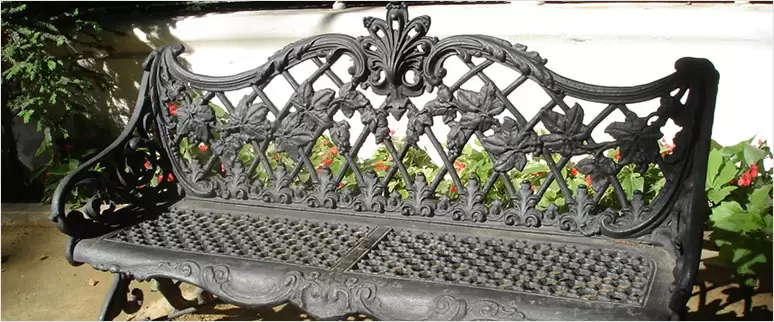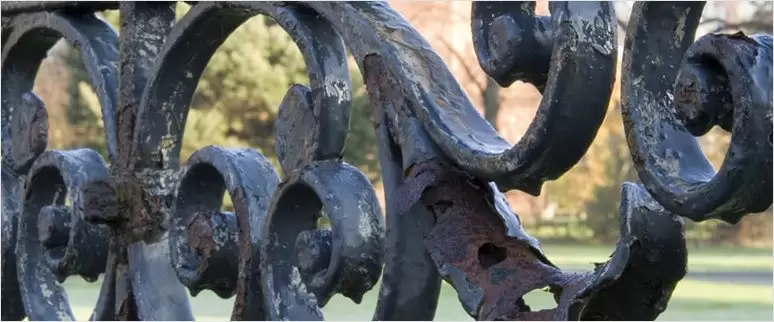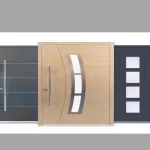In the vast world of metals, several key materials stand out for their unique properties and applications. Cast Iron, Wrought Iron, Pig Iron, Steel, and Aluminium have all played essential roles in shaping human civilization and continue to do so in the modern age. In this blog, we will explore the characteristics, uses, and differences of each metal, shedding light on their respective strengths and weaknesses.
Post your Requirement
Each type of metal – Cast Iron, Wrought Iron, Pig Iron, Steel, and Aluminium has distinct characteristics. that makes them suitable for different purposes. Here are the key differences and their applications in the construction field:
What is Cast Iron & Wrought Iron?
Iron decorations are widely used in the building industry for indoor and outdoor utility cum aesthetic purpose. They are usually made in cast iron and wrought iron.
Cast Iron:
Cast Iron is a type of iron-carbon alloy known for its high carbon content (2-4%) and low melting point. It is produced by melting iron and adding carbon, which allows it to solidify into a cast mould. Cast Iron is known for its excellent castability, making it ideal for intricate designs and shapes. Due to its brittleness, it is not suitable for applications requiring high tensile strength.
Uses: Cast Iron is commonly used for manufacturing cookware, pipes, engine blocks, and decorative items due to its excellent heat retention and castability.
- Cast Iron is rarely used in modern construction due to its brittle nature and low tensile strength.
- In the past, it was used for decorative purposes, such as ornate railings and columns, but it has largely been replaced by more suitable materials like steel.
- Cast Iron’s high carbon content makes it prone to cracking under heavy loads or sudden impacts, limiting its use in construction.
Wrought Iron:
Wrought Iron is nearly pure iron with a carbon content of less than 0.1%. It is produced by heating cast iron and manually removing impurities to create a fibrous structure. Wrought Iron is renowned for its malleability, ductility, and corrosion resistance. However, its low carbon content also limits its tensile strength, making it less suitable for load-bearing applications.
Uses: Wrought Iron is historically known for its use in ornamental ironwork, gates, fences, and artistic creations due to its aesthetic appeal and workability.
- Historically, Wrought Iron was used extensively in construction for decorative and structural purposes, especially in ornate gates, fences, and railings.
- Today, its use in the construction industry is limited, primarily due to its high cost compared to steel and its lower strength.
- Wrought Iron’s malleability and workability, however, still find niche applications in some restoration and heritage projects.
Cast Iron vs. Wrought Iron:
The main differences between cast iron and wrought iron are –
- Cast iron is iron that is melted and poured into a mold so that it takes the shape of the mold. Wrought iron is iron that is heated and worked upon with some tools to give it a nice decorative design.
- Cast Iron is brittle, hard and non-malleable. Wrought iron is ductile, malleable and can be heated again and again so that one could work on it so as to give it shape.
- Wrought Iron has a higher tensile strength compared to Cast Iron and can be used in the manufacture of horizontal beams. However Cast Iron has been replaced by steel in the construction industry.
- Wrought Iron is good for outdoor and indoor decoration purpose and Cast Iron is good for indoor decoration.Wrougth Iron can withstand extreme weather conditions and not corrode or rust easily.
- Wrought Iron is more stable and strong compared to Cast Iron.
- Cast Iron has a low melting point and is more fluid whereas Wrought Iron has a high melting point. This makes Cast Iron an easy material to work with while Wrought Iron is a labour intensive manufacturing job.
Pig Iron:
Pig Iron is the intermediate product obtained during the smelting of iron ore in a blast furnace. It is high in carbon (around 4%) and contains other impurities such as silicon, sulphur, and phosphorus. Pig Iron is brittle and unsuitable for most applications without further processing.
Uses: Pig Iron serves as a crucial raw material for producing steel and cast iron. It is not used directly due to its brittleness and high carbon content.
- Pig Iron itself is not used directly in construction due to its high carbon content and brittleness.
- It serves as a crucial raw material for the production of steel, which is extensively used in the construction industry.
Steel:
Steel is an iron-carbon alloy with a carbon content typically between 0.2% to 2.1%. It is produced by reducing iron ore and adding controlled amounts of carbon and other elements like manganese, chromium, or nickel. Steel possesses a wide range of mechanical properties, making it one of the most versatile and widely used materials in the world.
Uses: Steel finds application in various industries, including construction (rebars, beams), manufacturing (automobiles, machinery), and infrastructure (bridges, pipelines), owing to its exceptional strength, durability, and formability.
- Steel is one of the most widely used construction materials due to its exceptional strength, versatility, and durability.
- Various types of steel, such as structural steel (e.g., beams and columns), rebar (reinforcing bars), and sheet steel, are used in buildings, bridges, and infrastructure projects.
- Steel’s ability to withstand heavy loads and its flexibility in different construction designs make it a cornerstone of modern construction.
Aluminium:
Aluminium is a lightweight metal with excellent corrosion resistance. It is extracted from bauxite ore and refined through electrolysis. Pure aluminium is soft and not as strong as steel or iron, but it gains strength when alloyed with other elements like copper, magnesium, or zinc.
Uses: Aluminium’s low density and corrosion resistance make it a top choice for aerospace applications, beverage cans, transportation (car bodies, aircraft frames), and building materials.
- Aluminium is used in the construction industry, particularly in lightweight and corrosion-resistant applications.
- In modern construction, aluminium is employed for windows, doors, curtain walls, and roofing systems, as its low density eases handling and installation.
- Its use is more prevalent in commercial buildings and high-rise structures, where reducing the overall weight is crucial.
Difference between Pig Iron and Wrought Iron
Metals are significant materials in construction, architecture and design industry. They hold advantages on certain aspects over other materials. With metal, the design possibilities are not restricted with their versatility. However, one metal is different from another metal even if they look more or less the same. Pig Iron and Wrought Iron are two types of metals with composition of different components.
Pig Iron is made by melting iron, charcoal and limestone together through extreme air pressure. After the intense melting process in the furnace, the metal material pig iron is obtained. However, they cannot be used immediately as they are very raw and require further melting process to remove impurities like coke, sinter, lime, etc. At this stage, pig iron is very brittle and still unstable for any applications. Pig iron can be used only after melting again with other substances. Pig iron is one basic material for the production of wrought iron, cast iron and steel.
Properties of Pig Iron
- Pig iron has high content of carbon (3.5% – 4.5%) along with slight percentages of manganese, sulphur, silicon and phosphorous.
- It has week mechanical properties which makes it not an ideal metal for end products.
- They are used in decorative art pieces like statues and molding figurines
- Pig iron is not very difficult to handle in the casting process
- Pig iron is ideal for industrial use, construction industry, aviation, automotive and ship building.
Properties of Wrought Iron
- Wrought Iron is highly malleable and ductile material, and can be reheated a number of times.
- They are known for its fibrous appearance.
- They are not resistant enough to unexpected and extreme shocks.
- The content of carbon is very low in wrought iron.
- Wrought iron is free from impurities which make it very soft.
- They are susceptible to corrosion when bare surfaces are left exposed to oxygen in the presence of moisture.

Difference between Aluminium and Wrought Iron
Aluminium and Wrought Iron are metals yet they have different chemical and physical characteristics in comparison. Here are some interesting facts about the two metals.
Aluminium vs Wrought Iron
- Aluminium is lighter than wrought iron. Because of its light weight, aluminium is mostly preferred metal for use in various machines and automobiles.
- Both the metals have high melting and boiling points. In comparison, wrought iron is slightly higher than aluminium.
- Aluminium is the most abundant metal available in the earth’s surface unlike other metals. About 8 percent of the earth’s solid surface is made up of aluminum.
- Aluminium is better conductor of heat and electricity when compared to wrought iron. In fact, it has a high potential of becoming a superconductor.
- Wrought Iron is magnetic whereas aluminium, unlike other metals, is non-magnetic.
- Wrought Iron is susceptible to corrosion when bare surfaces are left exposed to oxygen in the presence of moisture. While aluminium when in contact with oxygen forms a layer known as aluminium oxide which protect the surface from corrosion.
Both are malleable and ductile material. Aluminium is listed second among metals and in sixth place in terms of ductility.
What is the Difference between Steel and Wrought Iron?
Steel
Steel is an alloy of iron, carbon and other elements. They are hard and strong and used as fabricating and structural material, and also used extensively in all sorts of construction.It has high tensile strength and elasticity which make it ideal to use as automobile and airplane parts. Besides, steel has many other uses and applications, such as shipping containers, home appliance, furniture, etc. What makes consumers to opt for the steel is its low cost. Steel reacts when exposed to moisture and more vulnerable to corrosion and rust if proper care is not taken. Products made of steel need more intensive workmanship than iron wrought.
Wrought Iron
Wrought iron is comprised of pure iron and iron silicate. It is the type of iron that can be easily welded and reshaped while its red hot in the fire to get the desired form. Wrought iron has high tensile strength but in comparison with Steel, they are slightly weak. They are less susceptible to corrosion than Steel when bare surfaces are left exposed to oxygen in the presence of moisture. Wrought iron are largely used to make decorative pieces, patio furniture, railings, fencing, window grilles, shelving, security doors, etc.
Conclusion
In conclusion, Cast Iron and Wrought Iron are less commonly used in modern construction due to their limitations in strength and cost-effectiveness. Pig Iron is not directly used in construction but serves as a key component in steel production. Steel, with its various types and properties, remains the dominant metal in the construction industry, offering strength, versatility, and durability. Aluminium, on the other hand, finds application in specific lightweight and corrosion-resistant building elements. Selecting the appropriate metal depends on the specific requirements and demands of the construction project.
Each metal discussed in this blog – Cast Iron, Wrought Iron, Pig Iron, Steel, and Aluminium – possesses unique characteristics that make them suitable for diverse applications. Whether it’s the castability of Cast Iron, the malleability of Wrought Iron, the versatility of Steel, or the lightweight nature of Aluminium, understanding the properties of these metals is crucial for making informed decisions in various industries. As technology advances, these materials continue to evolve, further expanding their potential applications and contributions to society.























Post A Comment